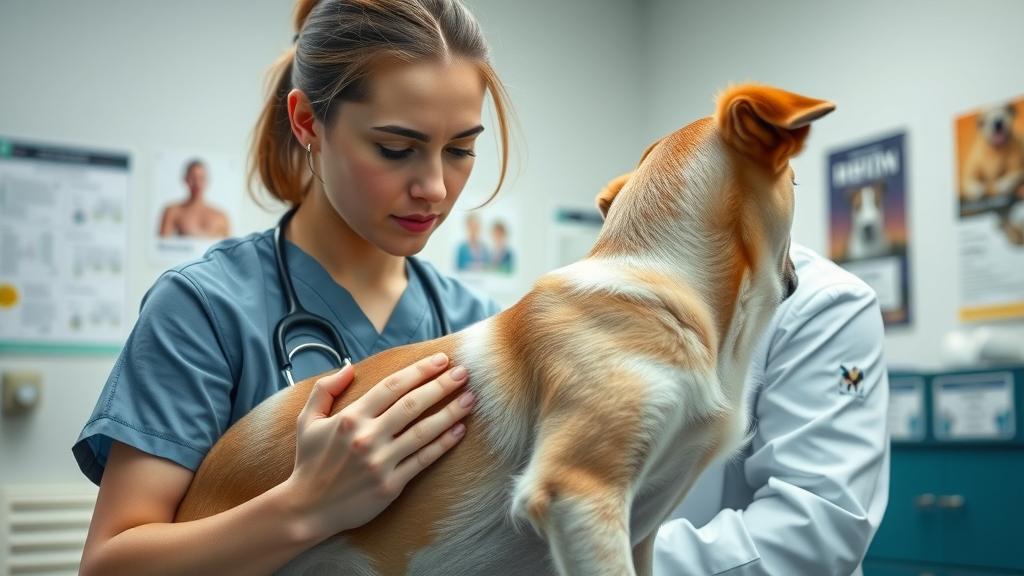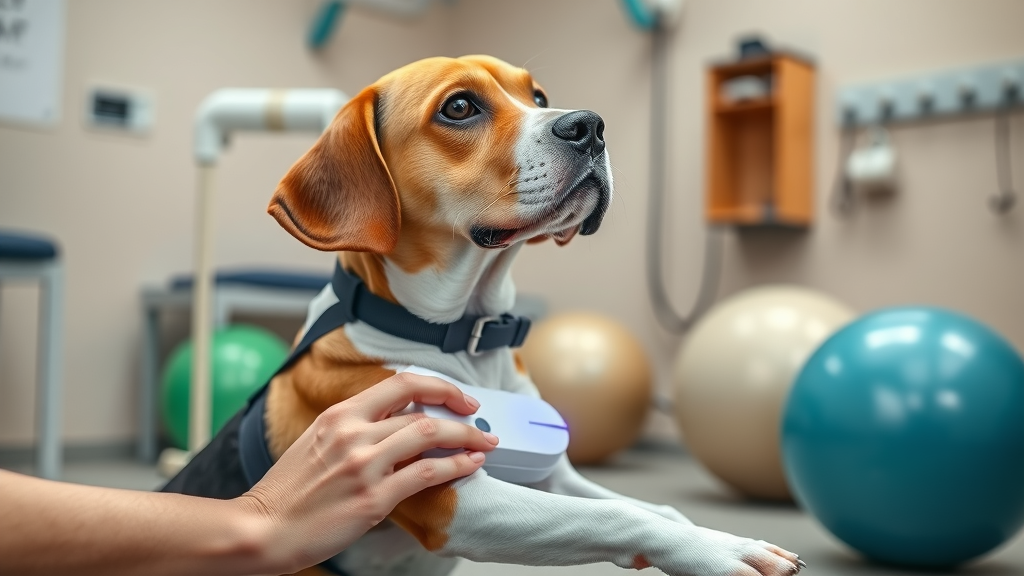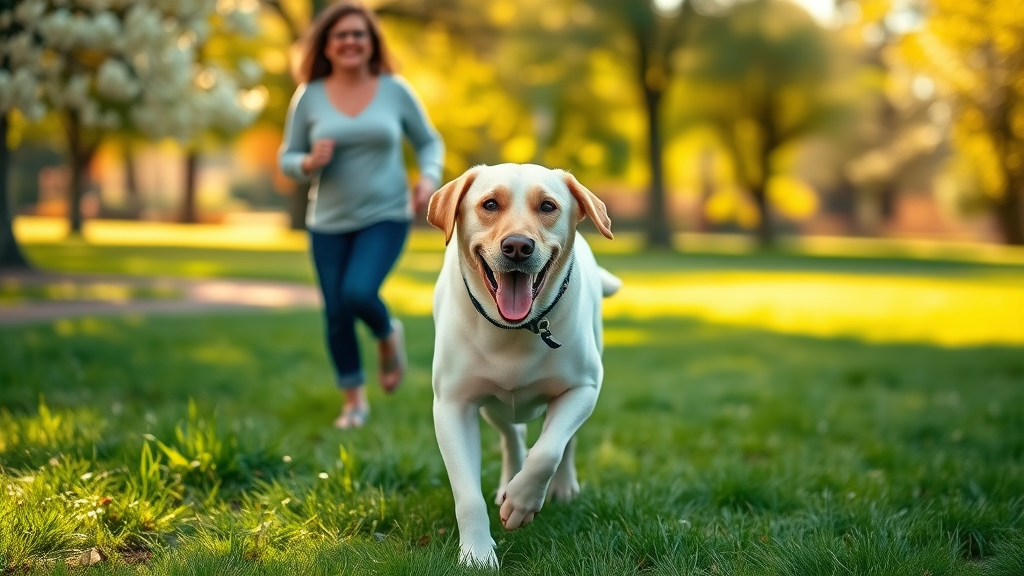Did you know that over 80% of senior dogs show evidence of arthritis ? For countless pet owners, dog arthritis treatment can mark the difference between years of hidden discomfort and a happy, active life for their furry companions. If you’ve noticed your dog slowing down, struggling with stairs, or favoring certain limbs, you may be witnessing the early signs of arthritis in dogs—a common yet often misunderstood condition.
This comprehensive guide will unravel expert-backed pain relief strategies, cutting-edge therapies, and easy at-home changes. Whether you’re facing arthritis in an aging dog or safeguarding a beloved pet’s future, you’ll find actionable insights, answers, and hope within these pages. Don’t let arthritis pain define your dog’s golden years—discover what you can do to restore comfort and quality of life starting today.
Uncover the Reality: Dog Arthritis Treatment Matters More Than You Think

"Did you know over 80% of senior dogs show evidence of arthritis? For many, early intervention with proper dog arthritis treatment makes the difference between years of discomfort and a happy, mobile life."
Dog arthritis treatment is not a luxury—it's a crucial element in preserving quality of life for your furry family member. Many dog owners overlook subtle changes like mild stiffness or reluctance to play, dismissing these as signs of normal aging. However, even mild symptoms can signal the start of arthritis in dogs , a progressive condition that worsens without appropriate pain relief and management.
Early intervention offers the greatest chance to slow the progression of osteoarthritis in dogs . With proper joint supplement support, lifestyle adjustments, and vet-supervised treatments, your dog’s comfort and mobility can be safeguarded even as they age. Proactive dog arthritis treatment may prevent years of arthritis pain, foster greater independence, and even reduce the long-term need for strong pain medication. This article will equip you with real-world examples, best practices, and expert insights to advocate for your pet’s lifelong health.
Comprehensive Guide to Dog Arthritis Treatment: What You’ll Gain from This Resource
- Recognize early signs of arthritis in dogs
- Understand available dog arthritis treatment options
- Explore pain relief strategies and joint supplements
- Discover how lifestyle changes can support dogs with arthritis
- Get answers to your most-asked questions about arthritis in dogs
In the following sections, you’ll learn how to recognize the signs of arthritis , compare mainstream and natural treatment options , understand potential side effects , and implement practical strategies for pain relief and comfort. Whether your goal is to improve mobility, reduce pain and inflammation, or simply ensure a happy and comfortable life for your dog with arthritis, you’re in the right place.
We’ll also answer the most common questions from dog owners and show you how everyday changes—like weight management , therapeutic exercise, and nutritional support—can greatly enhance your pet’s prognosis. Let’s take the first step in your dog arthritis treatment journey together!
Recognizing Arthritis in Dogs: How Early Dog Arthritis Treatment Can Change Outcomes

Spotting the early signs of arthritis in dogs can be the turning point between rapid mobility loss and a life of comfort. Dogs are masters of hiding discomfort, so it’s up to vigilant dog owners to note any reluctance to engage in normal activities. Common signs include difficulty rising from rest, hesitation to climb stairs, and a withdrawal from once-loved walks or play sessions.
If you see limping, lameness, or behavioral changes —such as aggression or increased solitude—these could be signals to seek dog arthritis treatment right away. Early detection is award-winning: it increases the effectiveness of pain relief strategies , allows for safer use of joint supplements , and helps keep side effects at bay by minimizing the need for aggressive medications down the line. By catching arthritis pain early, your intervention might offer your pet years of better health and mobility.
Key Signs of Arthritis in Dogs and When to Seek Treatment
- Stiffness upon rising
- Difficulty climbing stairs
- Reluctance to play or walk
- Limping or lameness
- Behavioral changes (aggression, withdrawal)
"The sooner you begin dog arthritis treatment, the more likely you are to preserve your dog’s quality of life." – Veterinary Pain Specialist
Engage your veterinarian at the first sign of these issues. With an early diagnosis and the correct arthritis treatment options , you empower your pet to remain active and minimize long-term arthritis pain.
Understanding Dog Arthritis Treatment: Types and Effectiveness
| Treatment Option | Effectiveness | Typical Use | Potential Side Effects |
|---|---|---|---|
| NSAIDs (pain medication) | High | Moderate to severe arthritis | Gastrointestinal, kidney |
| Joint Supplements (glucosamine) | Moderate | Early or mild arthritis | Rare (digestive upset) |
| Physical Therapy | High | Post-injury/advanced cases | None |
When considering dog arthritis treatment , you’ll encounter several treatment options . NSAIDs (non-steroidal anti-inflammatory drugs) are often prescribed for pain relief in cases of moderate to severe arthritis, but owners must be aware of potential side effects such as gastrointestinal upset or kidney issues. Meanwhile, joint supplements like glucosamine and chondroitin are preferred in early or mild arthritis, offering moderate effectiveness and rare adverse reactions.
Physical therapy shines as a high-effectiveness solution for dogs post-injury or those with advanced arthritis pain, with virtually no side effects except a little fatigue after sessions. Choosing the right therapy depends on your pet’s diagnosis, lifestyle, and specific needs—working closely with your veterinarian ensures that each treatment option is tailored for maximum benefit.
Comparing Mainstream and Natural Dog Arthritis Treatment Options

Mainstream therapies such as prescription NSAIDs and specialized pain medications are rigorously studied for their immediate effectiveness, especially in managing acute arthritis pain . Still, a growing number of dog owners seek natural and holistic alternatives to treat arthritis in dogs with fewer potential adverse effects. Natural treatments include fish oil supplements for anti-inflammatory fatty acids, turmeric, acupuncture, and physical rehabilitation through therapeutic exercise.
While mainstream options offer rapid relief for dogs with arthritis , natural remedies fit well in multimodal approaches—particularly for senior dogs sensitive to medication side effects. Consulting your vet about combining the best of both worlds can deliver the most comprehensive comfort and support for your pet.
Pain Relief for Dogs with Arthritis: Core Strategies to Maximize Comfort
Veterinary Pain Medications: NSAIDs, Opioids, and More
The cornerstone of pain relief in dog arthritis treatment is the targeted use of medications like NSAIDs , opioids (for severe cases), and other adjunct therapies. NSAIDs reduce pain and inflammation, improving range of motion so your dog can walk, stretch, and play with less discomfort. However, these pain medications often require regular monitoring due to their potential side effects, especially in older dogs or those with existing liver or kidney concerns.
For advanced arthritis pain or flare-ups, vets may prescribe other pain medications such as tramadol or gabapentin, offering broader pain relief without the gastrointestinal side effects of NSAIDs. Regardless of the therapy chosen, close partnership with your vet ensures optimal dosing and catches any emerging problems early. Pain relief isn’t just about comfort—it’s about restoring engagement, mobility, and quality of life for your dog with arthritis .
Joint Supplements and Nutraceuticals for Dog Arthritis Treatment

Joint supplements have become staples in modern dog arthritis treatment programs. The most widely used nutraceuticals include glucosamine, chondroitin sulfate, and Omega-3 fatty acids derived from fish oil. These substances support joint cartilage, decrease inflammation, and may even slow the progression of joint degeneration in dogs with arthritis .
While results vary, early introduction of joint supplements might minimize your dog’s reliance on stronger pain medications in the future. Dog owners often see improvements in ease of movement and day-to-day comfort. Always select veterinary-approved products, as supplements from unreliable sources may lack the necessary concentration or purity.
Physical Therapy and Rehabilitation to Treat Arthritis in Dogs
Physical therapy is a transformative approach for dogs with arthritis , especially those no longer finding comfort in medications alone. Modalities like massage, passive range of motion exercises, underwater treadmills, and targeted stretching all help to improve mobility , decrease inflammation, and restore muscle strength.
Physical rehabilitation also serves as a vital option in senior dog care plans, maximizing comfort without drug-based side effects. Trained canine rehabilitation therapists design customized plans—including therapeutic exercise —based on your pet's specific needs and health status. With consistent sessions, even the most arthritic dog can reclaim lost function and enjoy more pain-free days.
Incorporating Weight Management and Diet for Dogs with Arthritis
Carrying even a few extra pounds puts excessive strain on arthritic joints, worsening mobility challenges. Weight management —achieved through restricted-calorie diets and consistent, gentle activity—offers substantial relief for dogs suffering from arthritis pain.
Nutrition is critical, too. Specialized veterinary diets rich in anti-inflammatory fatty acids, chondroitin sulfate, and antioxidants further decrease inflammation and protect joint tissues in dogs and cats . By combining smart diet choices with regular short walks and activity, you’ll drastically improve your dog with arthritis 's daily comfort and long-term outlook.
Exploring Innovative Dog Arthritis Treatment: Advanced Solutions
Regenerative Medicine: Stem Cell Therapy and PRP

Regenerative medicine is revolutionizing dog arthritis treatment far beyond traditional pain relief. Stem cell therapy involves harvesting your pet’s own stem cells, which are then injected into arthritic joints to stimulate tissue repair and decrease inflammation naturally. PRP (Platelet Rich Plasma) therapy applies a similar philosophy, using your dog’s blood platelets to promote healing within damaged cartilage.
These treatments are especially valuable for younger dogs with early-stage arthritis or those not responding to standard medications. While the upfront cost can be significant, the potential to avoid stronger pain medications or surgery makes regenerative medicine a promising area for the future of arthritis care.
Cold Laser and Advanced Physical Rehabilitation Techniques

Cold laser therapy is gaining recognition as a non-invasive solution for arthritis pain. By directing a low-level laser at affected joints, therapists can decrease inflammation, promote local healing, and provide rapid relief without the risk of drug side effects.
When paired with advanced physical rehabilitation techniques—like underwater treadmill therapy, balance work, and targeted strength building—dogs enjoy faster recovery, better range of motion, and longer stretches between arthritis flare-ups. These therapies, combined, represent the next frontier of dog arthritis treatment and greatly enhance a senior dog’s chance to thrive, not just survive.
Managing Side Effects in Dog Arthritis Treatment: What to Watch For
Common Side Effects from Pain Medications and Joint Supplements
"Always report new symptoms or adverse reactions to your vet—side effects can sometimes outweigh the benefits if not carefully monitored."
While many dog arthritis treatments are safe and effective, all medications and supplements can bring side effects . NSAIDs, for example, often cause gastrointestinal upset (such as vomiting or diarrhea) and, rarely, kidney or liver issues with long-term use. Opioid-based pain medications may cause sedation or constipation, especially in sensitive or senior dogs.
Joint supplements are typically well-tolerated, though digestive upset can occur—especially if doses are not titrated properly. It’s crucial for dog owners to monitor for changes in appetite, increased vomiting, or unusual behaviors and report these promptly to a vet. Adjusting dosages, switching medications, or integrating alternative therapies can help manage arthritis pain without compromising overall health.
Routine veterinary checkups and regular bloodwork are essential to catching potential problems early. Never start, stop, or change your dog’s medication regimen without professional supervision. With careful monitoring, you’ll maximize your pet’s pain relief and minimize risk.
At-Home Strategies for Dog Arthritis Treatment: Gentle, Daily Relief
- Daily gentle exercise routines
- Using orthopedic beds
- Non-slip rugs and ramps
- Warm compresses for joints

Supporting a dog with arthritis doesn’t end at the vet’s office. At-home strategies provide gentle, daily relief and can add years of comfort to your pet’s life. Start with brief, controlled walks to keep joints lubricated—avoid strenuous activity that could exacerbate joint wear. Orthopedic dog beds and plush bedding offer supportive comfort that eases pressure points, especially for a senior dog.
Installing non-slip rugs and ramps throughout the home can keep your dog safe and mobile, preventing slips and falls that often worsen arthritis pain and decrease confidence. With each step, your commitment to pain relief grows stronger. Don’t forget warm compresses for sore joints, which offer drug-free comfort on chilly days. These simple measures, though small, combine to create a dramatically improved quality of life.
Preventing Arthritis Pain in Dogs: Early Intervention Strategies
Role of Regular Veterinary Checkups
Routine wellness exams are not just for puppies—they are a key pillar in preventing advanced arthritis pain in dogs. Early checkups provide an opportunity for your vet to detect subtle changes in gait, joint flexibility, or signs of discomfort. When discovered early, interventions such as joint supplements or modified exercise plans can be implemented before irreversible joint damage occurs.
Weight Management and Targeted Nutrition
Proactive weight management remains the single most effective way to slow the progression of arthritis in dogs. Targeted nutrition—rich in Omega-3 fatty acids and supportive antioxidants—reduces joint inflammation and supports tissue repair while minimizing the risk of diabetes or other metabolic issues in overweight pets. Balanced diets, nutrient supplements, and ongoing collaboration between owner and veterinarian pave the way to lifelong comfort for every dog with arthritis risk.
Keep in mind that regular short walks, therapeutic play, and mindful feeding habits build the foundation for a mobility-filled, pain-free life—even into old age. Your daily choices do matter.
Cost of Dog Arthritis Treatment: Budgeting for Your Pet’s Long-Term Health
| Dog Arthritis Treatment Type | Approximate Monthly Cost |
|---|---|
| NSAID Pain Medication | $30–$60 |
| Joint Supplements | $20–$50 |
| Physical Therapy | $50–$150 per session |
| Cold Laser Therapy | $30–$80 per session |

Planning for the cost of dog arthritis treatment is an essential part of long-term pet ownership. While some therapies—like joint supplements and specialized diets—are relatively inexpensive, advanced options (such as physical therapy or regenerative therapies) can quickly add up. Insurance, health savings plans, or setting aside a monthly pet wellness budget can lessen anxiety and ensure your dog receives the pain relief and mobility support they need.
Weighing the costs of early, preventive treatment against the risks of crisis-based intervention (such as emergency surgery) often shows that investing in daily joint health pays emotional and financial dividends for years to come.
People Also Ask: Expert Answers About Dog Arthritis Treatment
How do you treat arthritis in dogs?
Dog arthritis treatment usually involves a customized regimen combining pain medications (like NSAIDs), joint supplements (glucosamine, chondroitin), physical therapy, weight management, and at-home care adjustments. In advanced cases, regenerative therapies or surgery may be considered. Always consult a veterinarian to tailor a plan for your dog's unique needs.
What is the life expectancy of a dog with arthritis?
With vigilant care, pain relief, arthritis treatment options , and regular vet checkups, many dogs with arthritis enjoy years of healthy living post-diagnosis. While severe, untreated arthritis can shorten lifespan due to complications, early intervention usually allows for a normal or near-normal life expectancy.
What are the 4 stages of arthritis in dogs?
Stage 1 is subclinical—no visible signs. Stage 2 brings mild stiffness with activity. Stage 3 includes consistent limping and reduced mobility, while Stage 4 involves chronic pain, significant stiffness, or joint deformities affecting daily life. Early dog arthritis treatment is vital to halt or slow this progression.
How long does it take for an arthritis flare up to go away in dogs?
Flare-ups of arthritis pain in dogs usually resolve within a few days to two weeks with proper medication, rest, and supportive care. Ongoing flares may indicate the need to change treatment options or increase monitoring with your vet.
Case Study: Transformative Impact of Dog Arthritis Treatment

Meet Max—a 10-year-old Labrador who struggled with daily stiffness and reluctance to play. When Max’s owner recognized the subtle signs of arthritis, they partnered with their veterinarian to begin early treatment: NSAIDs for immediate pain relief, glucosamine supplements, home adjustments (like orthopedic beds), and a specialized physical therapy regimen.
Within months, Max regained much of his former mobility and zest for life. Regular checkups, targeted weight management, and supportive therapy allowed Max not only to walk without pain but to enjoy playful short walks and reunite with his favorite activities in the park. Max’s story stands as proof that dog arthritis treatment can dramatically improve both mobility and the relationship between owner and pet.
Frequently Asked Questions About Arthritis in Dogs, Pain Relief, and Treatment Options
Can dog arthritis treatment be started before symptoms become severe?
Absolutely! Preventive use of joint supplements , weight management, and gentle activity helps postpone or lessen severe symptoms. Early interventions, especially in breeds prone to arthritis in dogs, protect joints before major pain strikes.
Are there natural alternatives for dog arthritis treatment?
Yes. Many dog owners use fish oil (Omega-3 fatty acids), turmeric, acupuncture, and customized home exercise programs as natural alternatives or complements to traditional pain relief. Always discuss these with your vet for best (and safest) results.
Will pain medications for arthritis in dogs have long-term side effects?
Some medications, especially NSAIDs, may cause gastrointestinal, kidney, or liver issues if used long-term without monitoring. Routine vet visits and blood monitoring minimize risks and help balance pain relief with your dog’s long-term health.
Summary of Key Takeaways from Our Dog Arthritis Treatment Guide
- Dog arthritis treatment is most effective with early recognition and multimodal therapy.
- Pain relief, joint supplements, and weight management all play crucial roles.
- Continuous partnership with your vet ensures best results for dogs with arthritis.
Take Action: Start Your Dog Arthritis Treatment Journey Today
- Schedule a vet consultation for your dog
- Explore safe joint supplements
- Implement home comfort strategies
- Stay vigilant about mobility and pain levels
Recommended Videos: Dog Arthritis Treatment, Pain Relief, and Joint Care
- "Expert Tips for Dog Arthritis Treatment: Pain Relief at Home"
- "Physical Therapy Exercises for Dogs with Arthritis"
- "Choosing the Best Joint Supplements for Your Dog"
- "Recognizing Early Signs of Arthritis in Dogs"
- "Success Stories: Treating Arthritis Pain in Senior Dogs"
Ready to help your pet feel their best? Schedule a veterinary consult, start targeted joint care, and make your home arthritis-friendly—the path to relief starts today.
To further enhance your understanding of canine arthritis and its management, consider exploring the following resources:
-
The article “ Dog Arthritis Treatment: How To Help a Dog With Arthritis ” on PetMD provides comprehensive insights into various treatment options, including medications, alternative therapies, and lifestyle modifications to alleviate joint pain in dogs.
-
The American Kennel Club’s piece, “ Arthritis in Dogs: How to Treat and Manage Pain ,” offers expert advice on managing canine arthritis through diet, supplements, medications, and physical therapy, emphasizing the importance of a tailored approach for each dog.
These resources offer valuable information to help you develop a comprehensive plan for managing your dog’s arthritis and improving their quality of life.
 Add Row
Add Row  Add
Add 








Write A Comment